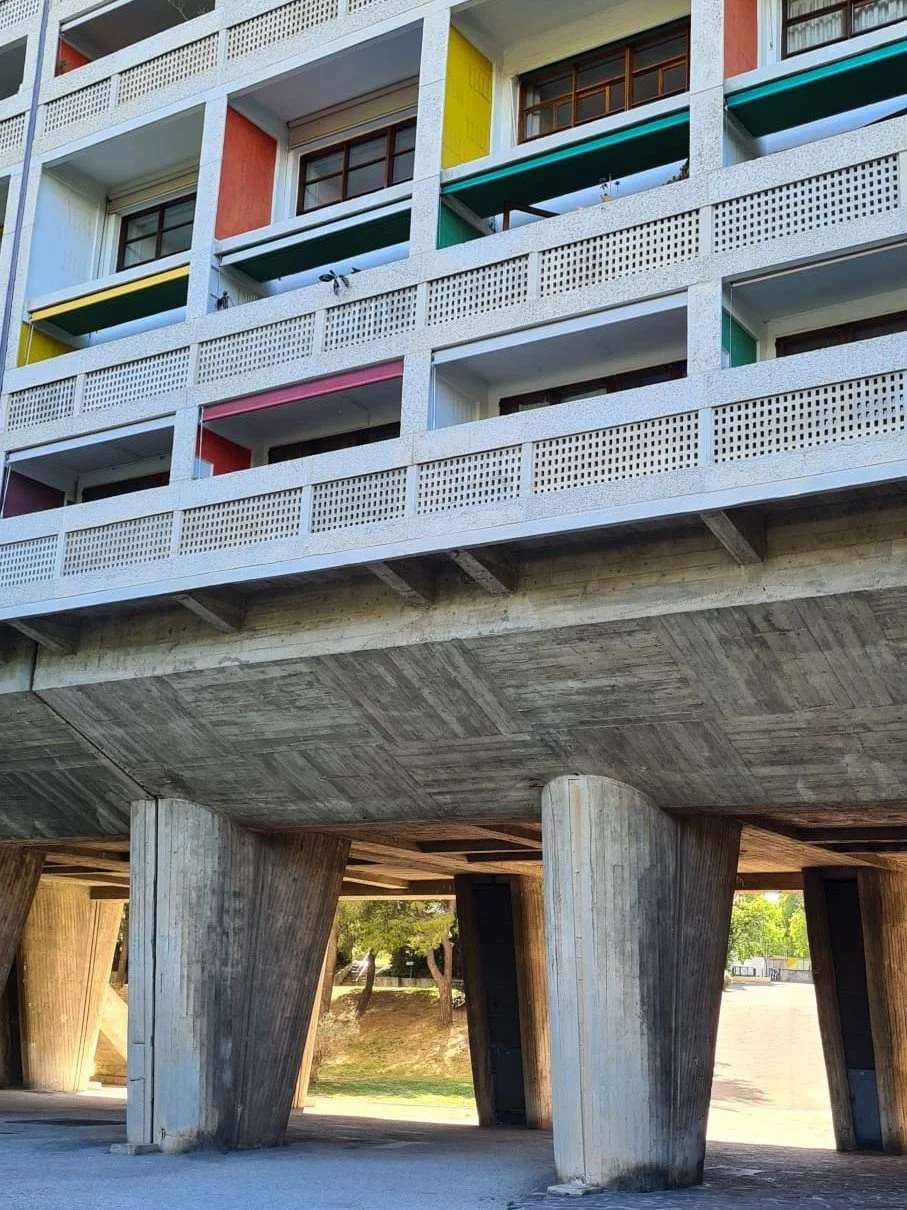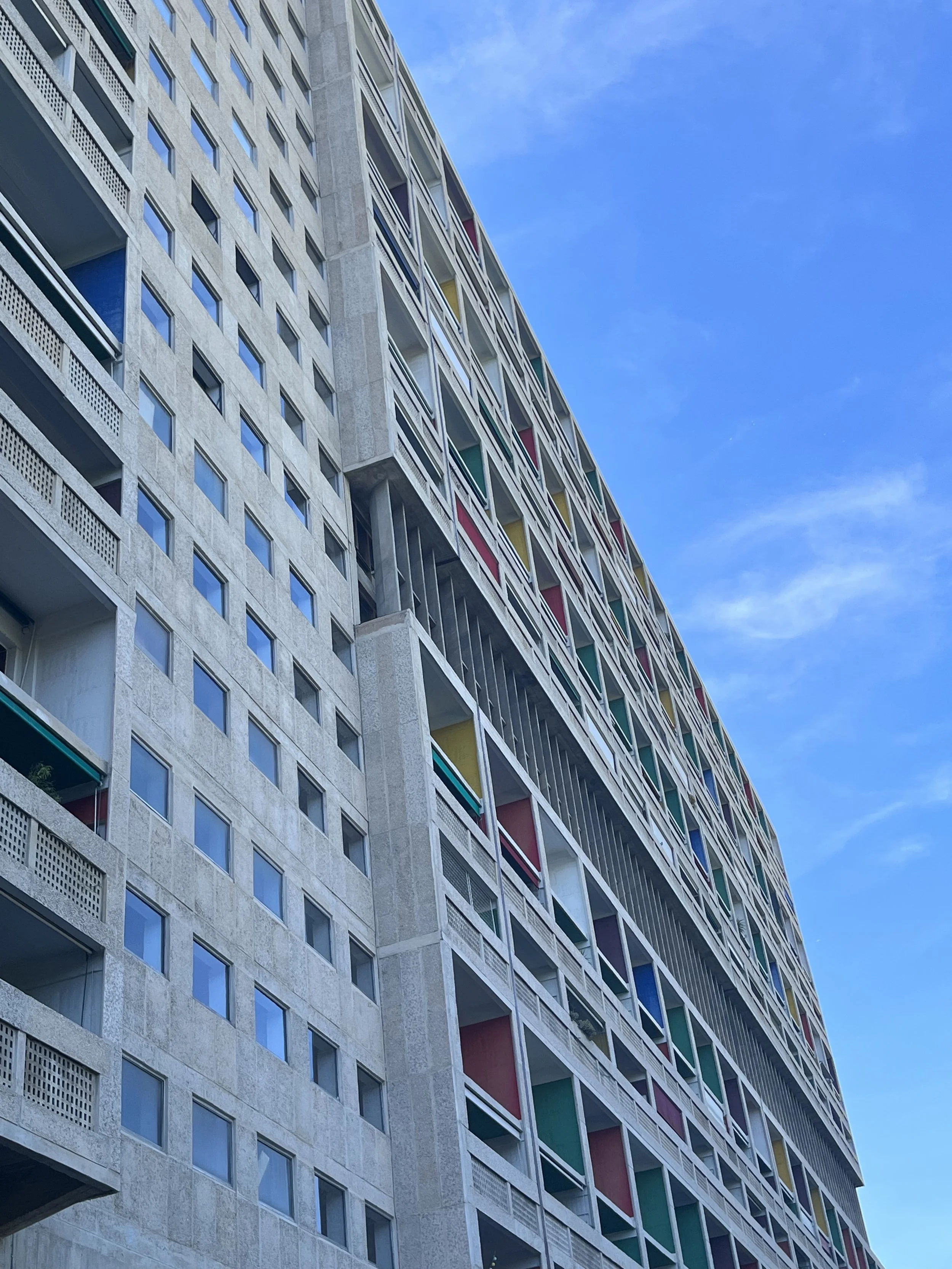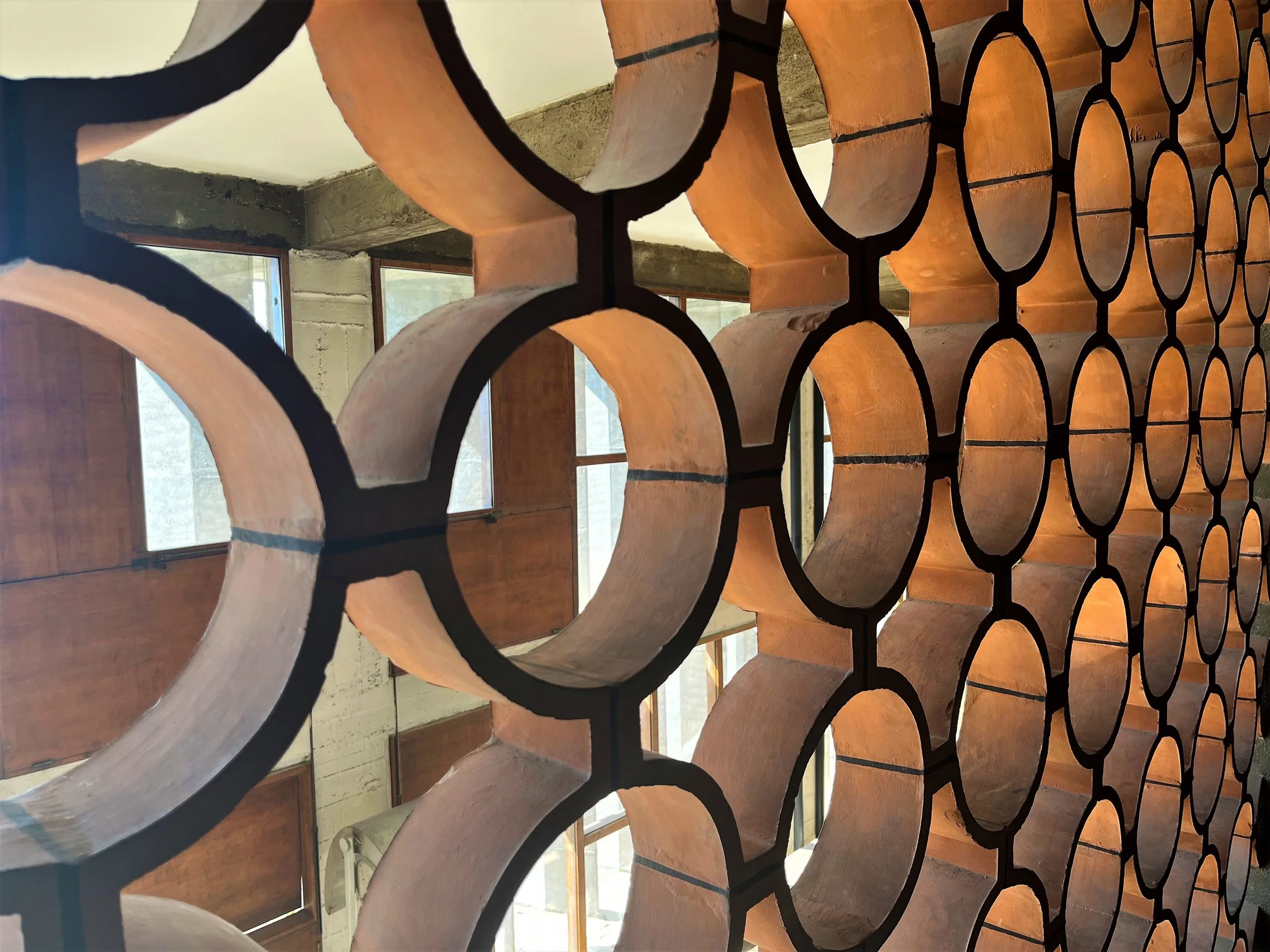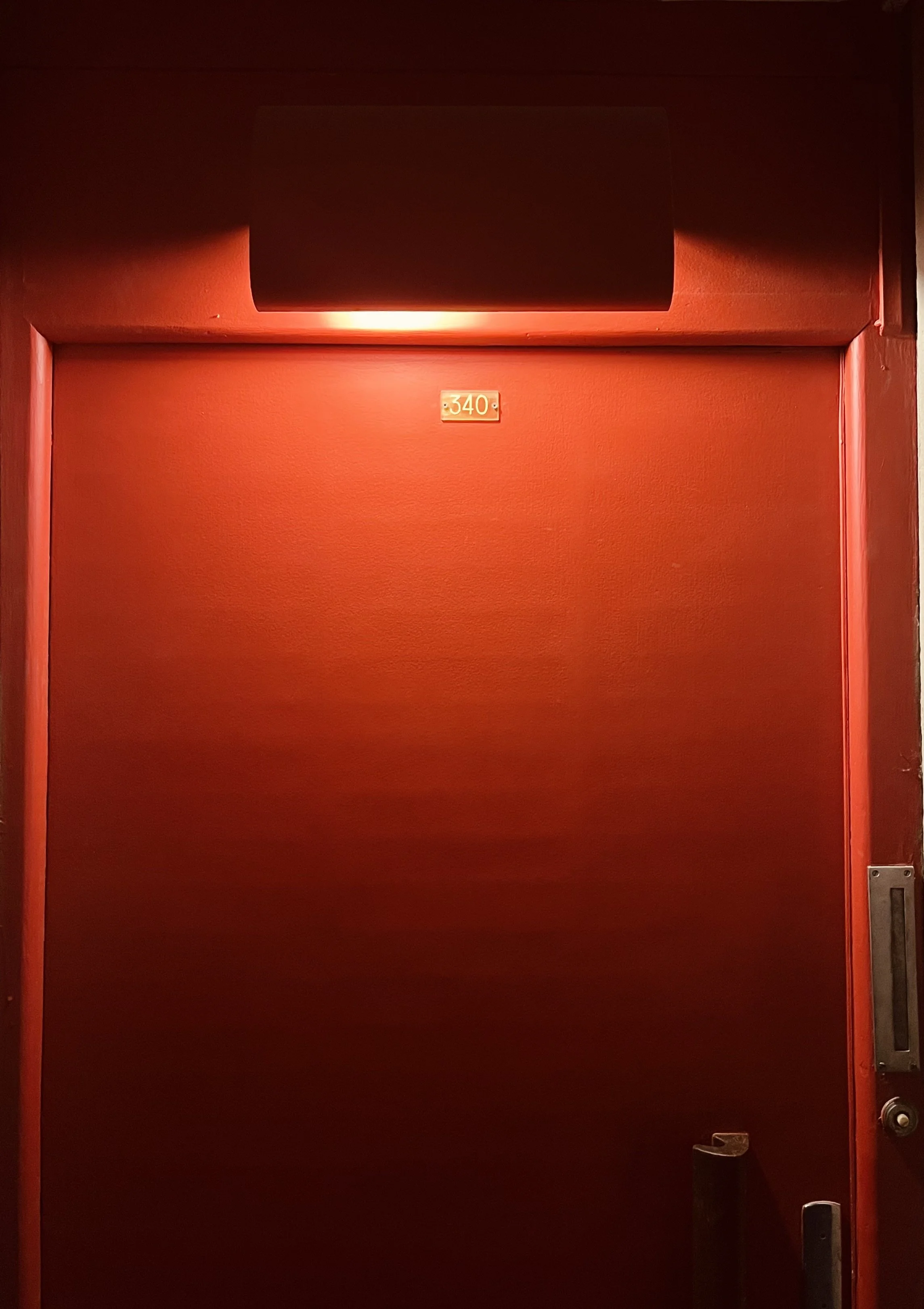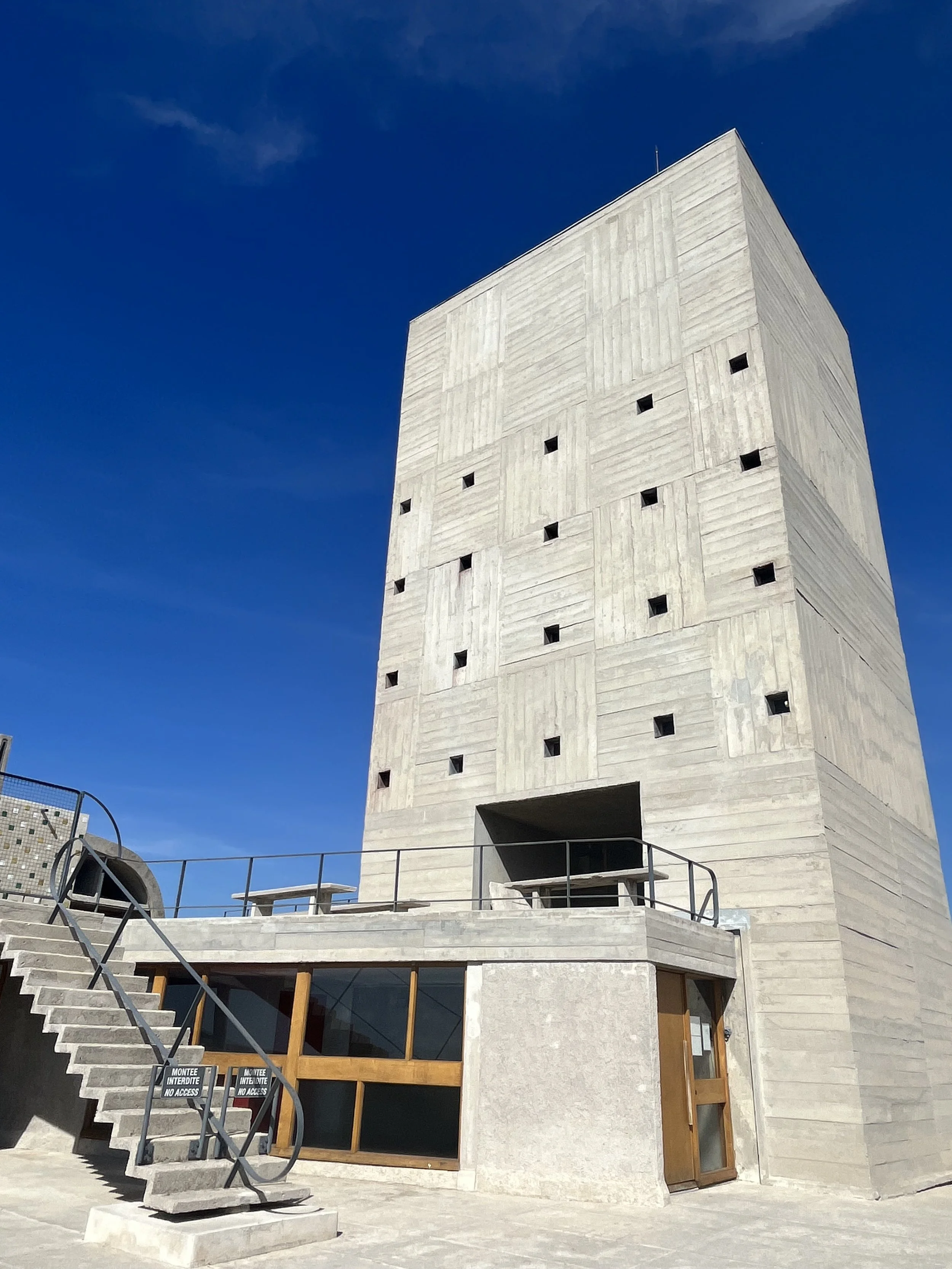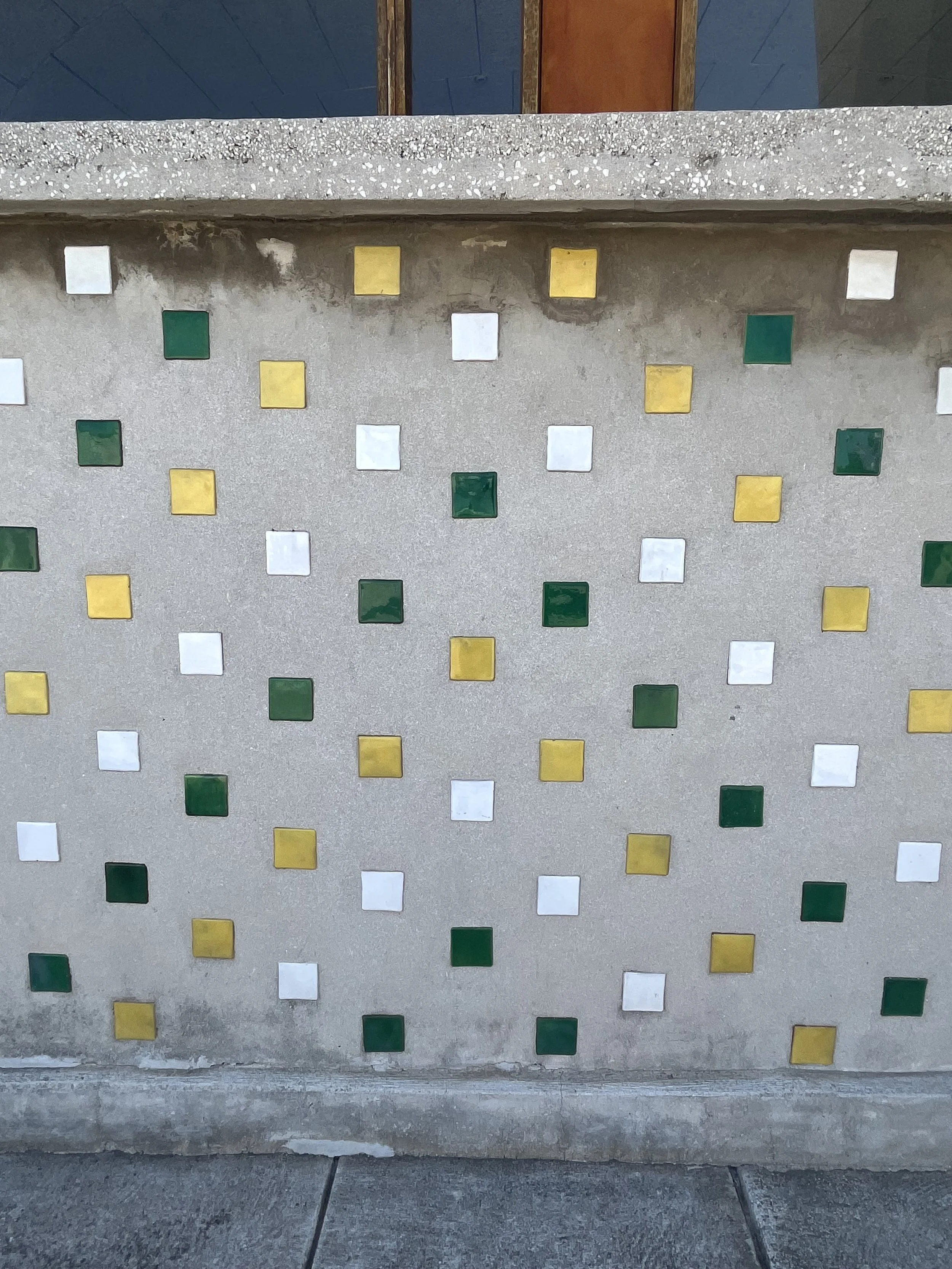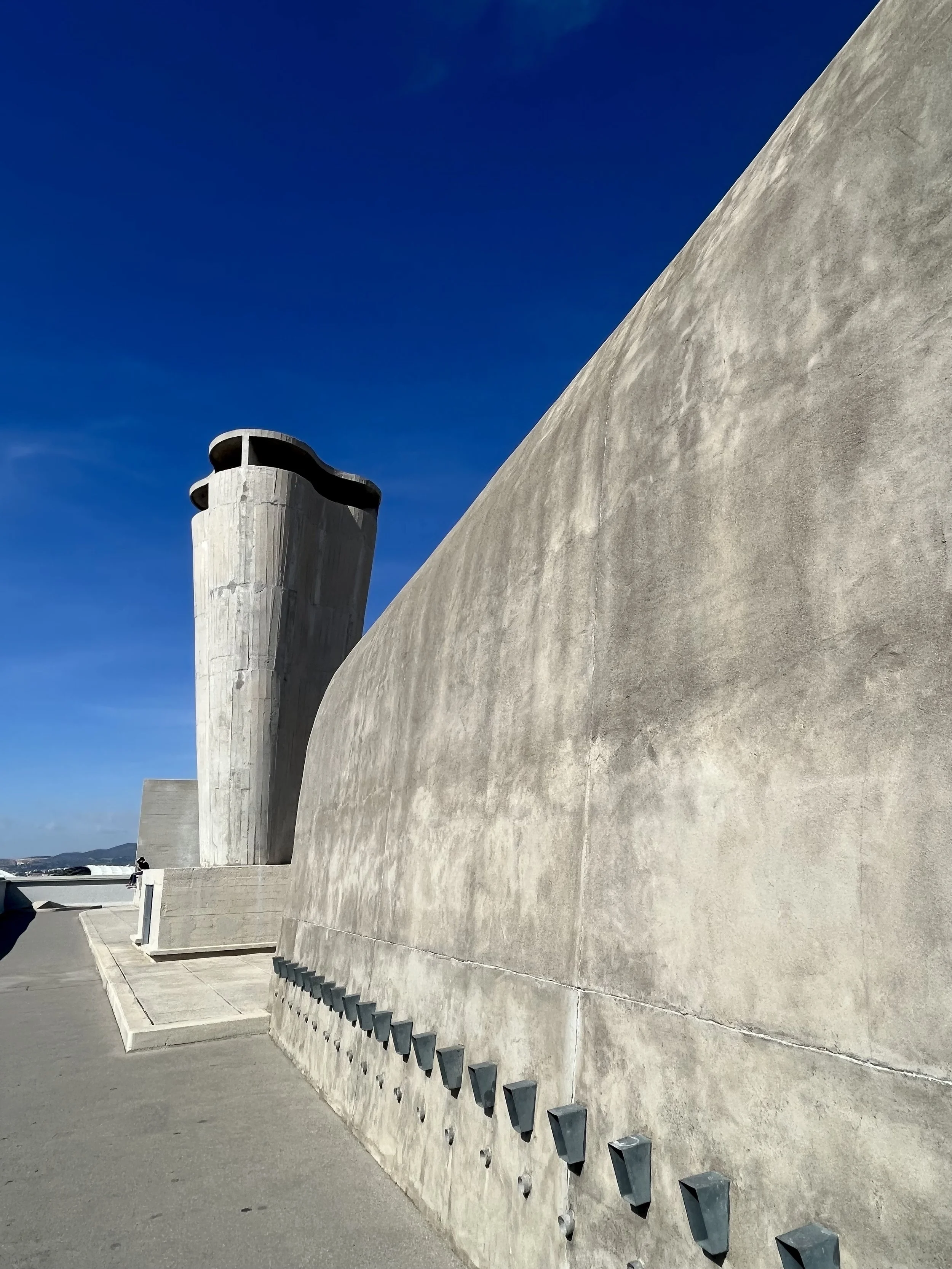Unité d’Habitation
An apartment block or a radiant city?
Unité d'Habitation can be considered one of the most influential buildings ever. Although the project was completed in 1952, it remains an innovative response to the often uninspiring residential apartment buildings. Le Corbusier's design is also the foundation of Brutalism, the architectural revolution characterized by the use of raw concrete.
Unité d'Habitation in Marseille is the first of a series of five residential projects by Le Corbusier. The architect refers to this building as ‘Cité Radieuse’, or ‘the Radiant City’. Le Corbusier breaks with the individual and private nature of an apartment building and its residents by emphasizing communal living. In addition to the apartments themselves, significant attention is given to the public spaces where residents can eat, shop, and exercise together.
The impressive building, 165 meters long and 56 meters high, is supported by monumental concrete pillars. Unlike other projects by Le Corbusier, it lacks his characteristic sleek white façade. The complex is entirely built from reinforced concrete. The façades consist of a grid of recessed windows and balconies with colorful side walls. The dimensions of ‘Cité Radieuse’ are based on Le Corbusier's own modular system, which is derived from the proportions of the human body.
Click any photo to view it in full size. Continue reading below the photo gallery.
‘Cité Radieuse’ contains 337 apartments separated by wide corridors. The majority of the apartments were designed as two-part units, mirrored on the east and west sides of the building. At one end is a double-height living room that extends the full depth of the block. Due to this stacking system, a central corridor or the so-called inner street is needed only on every third floor.
On the top floor of the building, the public spaces are located, where you can find shops, galleries, dining facilities, medical services, and a hotel. When visiting ‘Cité Radieuse’, you have access to two floors - one inner street and a shopping street - and the roof. Since the building still serves as a residential apartment block, the privacy of the residents is respected. Although only a limited part of the complex can be visited, it offers an excellent view of Le Corbusier's vision and architectural design of the building. The wide, dark corridor of the residents' street, with only the colored doors of the apartments as points of light, stands in stark contrast to the light-filled shopping street. The shopping street is finished with large windows, wooden elements, and colorful accents.
Click any photo to view it in full size. Continue reading below the photo gallery.
The roof is designed as a public space, featuring a daycare center, an athletics track, and a swimming pool. From the roof, you are treated to a magnificent view of the sea, the surrounding mountains, and the buildings of the French city itself. However, for me, it's not just the view that is impressive—the structures on the roof are equally striking. There are raw concrete chimneys with a sculptural appearance, the curved gymnasium finished with mosaic details, various staircase constructions... One is left in awe of the countless elements on display.
The original gymnasium now functions as an exhibition space for contemporary art, named MAMO (Marseille Modulor). The French designer Ora-Ïto purchased the entire rooftop terrace and carried out renovation work in 2013 to transform it into an art center. This way, if you're lucky, you can enjoy contemporary art in a unique architectural setting.
Unité d'Habitation stands as a monumental achievement in architectural history. Le Corbusier's vision of Cité Radieuse not only transformed the concept of residential living but also pioneered the Brutalist movement, reshaping the urban landscape with its raw, innovative use of concrete. Cité Radieuse continues to inspire architects and visitors alike, not only for its striking design but also for its ability to adapt to the needs of contemporary life, showcasing how architecture can evolve while staying true to its roots.
Cité Radieuse - Boulevard Michelet, 13008 Marseille, France.
Photos (c) Cultuurtoerist.
